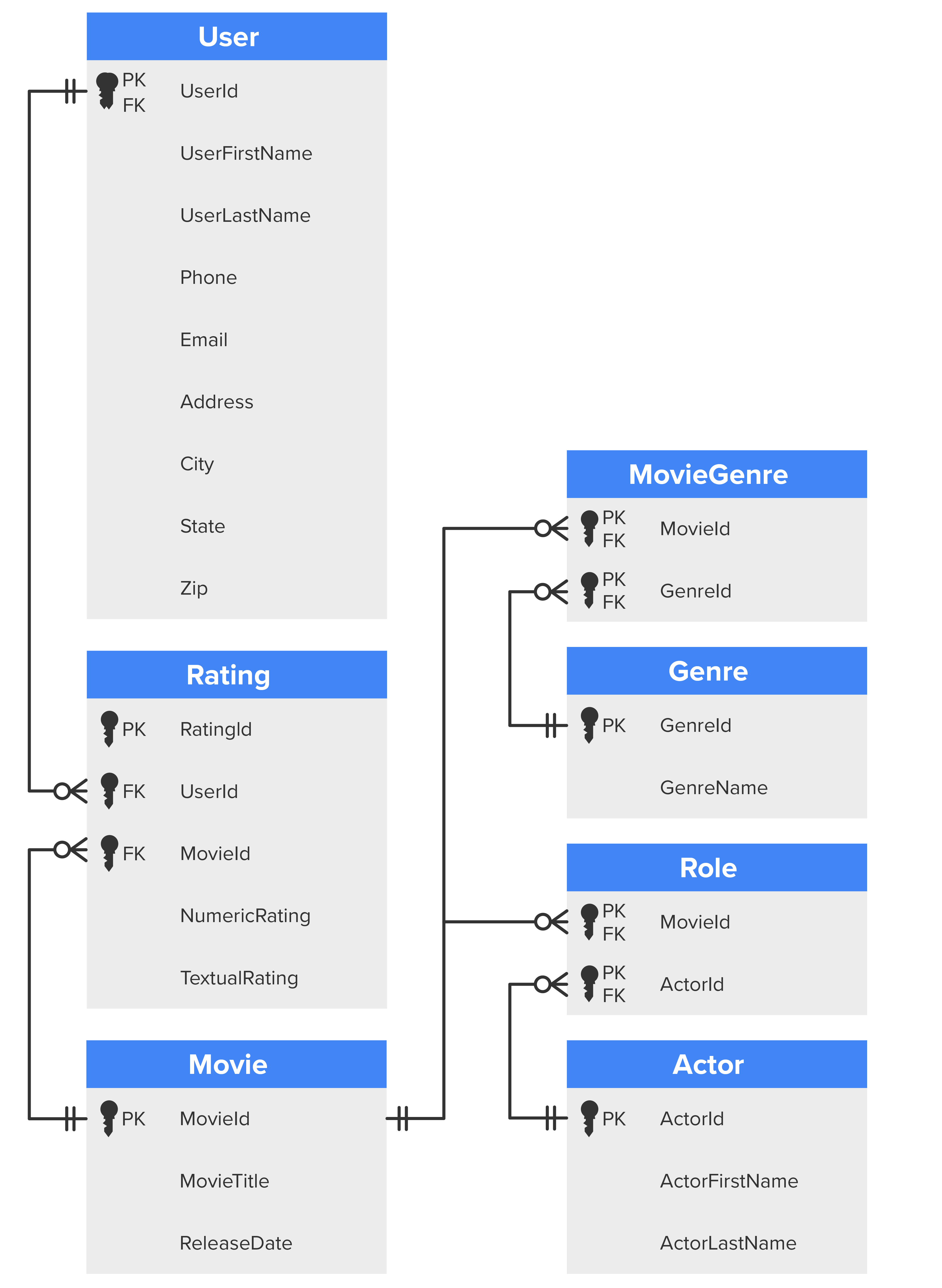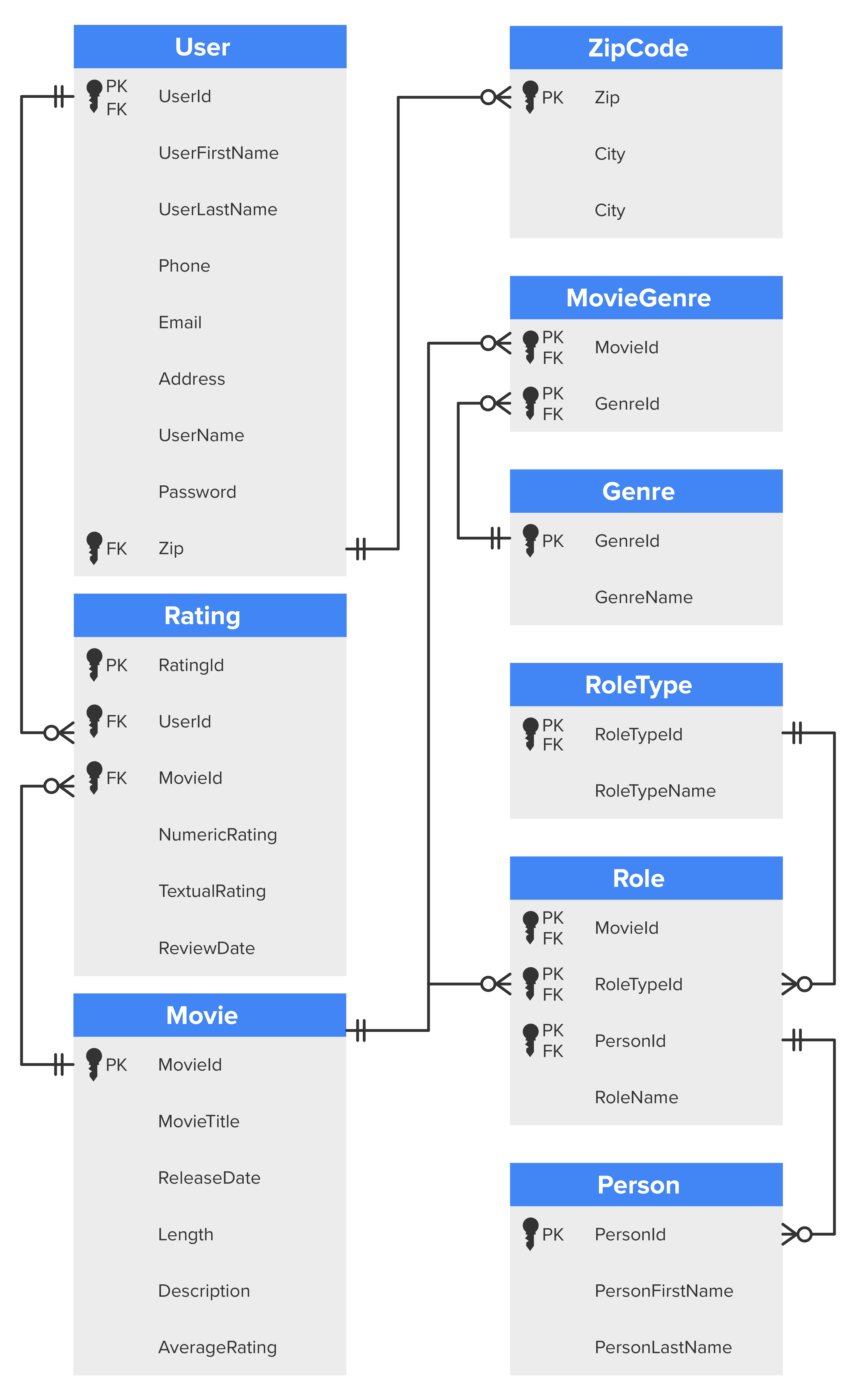Table of Contents |
Recall our database design for a movie ratings database from earlier challenges. While the ERD looked complex, in the end, the design fit the needs of the criteria that had been defined, and the resulting design looked like the following:

This database design works well, but some potential issues could arise. Understanding the business logic and processes better might lead us to expand the schema so it could track non-actor individuals who worked on each movie, such as producers, directors, and costume designers. With each type of work, it might make more sense to generalize the actor table to hold all the personnel on the movie and then add a role_type attribute and a lookup table for its possible values. This way, you could also have an individual play multiple roles within the same movie.
You might also want to reconsider the question of whether one user can review one movie multiple times and give it different ratings and reviews each time. If that is desirable, you might want to add a date and time of submission for each review. You might further want to add an average rating column to the movie table and have it be a derived value from data across all ratings for that movie. Further, in cases where one person rates a movie multiple times, you might want to include only their latest review of the movie when calculating the average; you could determine which is the latest by checking the submission date and time.

In the revised schema shown above, the role type is a lookup table, which will include all of the types of roles that an individual can play in a movie, allowing a lot more flexibility. In the movie table, there are some added columns that you would typically see in the movie. The user table has the ZIP code split off. As we discussed, this would be in third normal form (3NF), but it would not be crucial to have it implemented. Some of that decision making is dependent on a balance of redundancy over performance. The classic trade-off is between performance and data complexity.
Source: THIS TUTORIAL WAS AUTHORED BY DR. VINCENT TRAN, PHD (2020) AND Faithe Wempen (2024) FOR SOPHIA LEARNING. PLEASE SEE OUR TERMS OF USE.